Sucre and Potosi - Two Colonial Gems !
Finally, some Spanish colonial cities to really rival those found in Mexico.

Sucre is generally regarded as Bolivia´s finest city, sitting at moderate altitude of 2760m, it has a more pleasant climate than La Paz or Potosi. It was the countries first capital at its creation in 1826, a year after the region of Alto Peru split from Spanish-liberated Peru to become Bolivia. The Great Liberator of most of the northern half of the continent, Simon Bolivar, became the country´s first president and was succeeded in turn by his leading General, Jose de Sucre, giving the city its name. It was only with major political and economical changes in the 1950s that the capital was relocated to La Paz. Indeed Sucre still retains much of the judicial control and a large, wealthy middle class population and five universities.
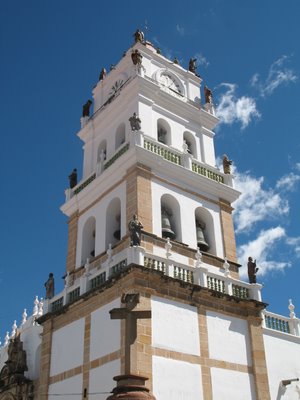
The white city of the Americas, is the best preserved Latin American city I have seen so far on this trip. The beautiful central plaza is surrounded by colonial era churches and grand balconied houses. Spent a very pleasant warm day strolling the streets, soaking it all up, meeting a group of three Kiwi lads in town over a leisurely breakfast and then again back at the hostel later. So we decided to go out for some pizza and beer and the excellent meal turned out to surpass most other Latin American pizzas, while a jazzy Andean Pan Pipe band entertained us with some energetic yet mournful music. Even the colonial-style hostel was a gem, large airy rooms, comfy beds and the same clean, crisp, whitewashed feel. Indeed after an excellent nights sleep, it was almost a shame to leave. I could have easily stayed another day. However, I decided to move onto Potosi and have the extra night at the higher altitude there. I figured it would be better to get fully adjusted to the real heights of the altiplano, with a 3 day tour of the high plains of the South West on the agenda.
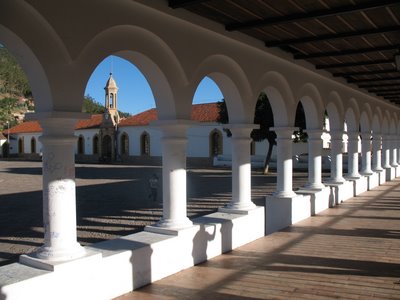
At 4090m, Potosi is the worlds highest city. It was also once rumoured to be the worlds richest. The Spanish search for silver struck the jackpot at Cerro Rico, which still dominates the town. Huge amounts were mined here, between the 16th and 18th centuries, enough to keep up the Spanish domination of colonial affairs for around two centuries. The impressive mint, is the towns colonial centrepiece and is now an excellent museum which has been fantastically restored to what must have been its former glory. Unsurprisingly, it was also the largest of eight mints the Spanish set up across Latin America. Only the rich silver veins of Mexico would begin to rival those found here. To this day, the mining continues, albeit on a much smaller scale, amid shocking working conditions which I decided not to witness due to worries about how it would affect my asthma. These days lead and zinc are the main metals found along with lesser amounts of silver and tin. Although less beautiful than Sucre, the town retains more of an authentic working feel to it. A diverse selection of churches from various periods allow you access to the roof of the city, from where there are excellent views. My two days here passed very quickly, there was plenty to explore just within the town itself and staying at the very friendly Koala Den was a real pleasure. I got the bus out to Uyuni heading out over the ever increasingly stark altiplano to the extreme limits of Bolivia´s most dramatic terrain. The next few days would prove to be very special indeed.
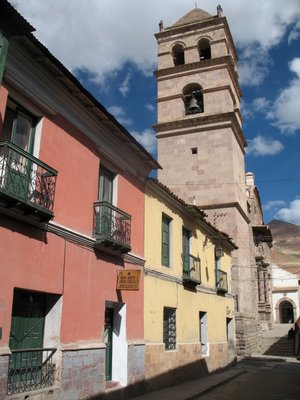
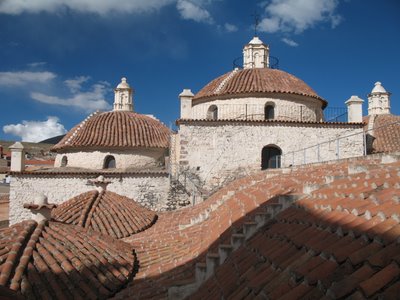
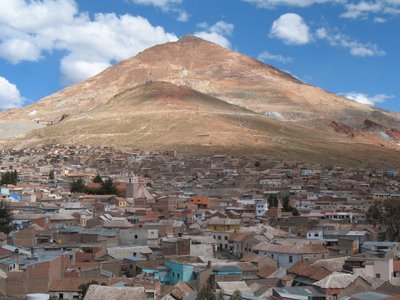
Finally, some Spanish colonial cities to really rival those found in Mexico.

Sucre is generally regarded as Bolivia´s finest city, sitting at moderate altitude of 2760m, it has a more pleasant climate than La Paz or Potosi. It was the countries first capital at its creation in 1826, a year after the region of Alto Peru split from Spanish-liberated Peru to become Bolivia. The Great Liberator of most of the northern half of the continent, Simon Bolivar, became the country´s first president and was succeeded in turn by his leading General, Jose de Sucre, giving the city its name. It was only with major political and economical changes in the 1950s that the capital was relocated to La Paz. Indeed Sucre still retains much of the judicial control and a large, wealthy middle class population and five universities.

The white city of the Americas, is the best preserved Latin American city I have seen so far on this trip. The beautiful central plaza is surrounded by colonial era churches and grand balconied houses. Spent a very pleasant warm day strolling the streets, soaking it all up, meeting a group of three Kiwi lads in town over a leisurely breakfast and then again back at the hostel later. So we decided to go out for some pizza and beer and the excellent meal turned out to surpass most other Latin American pizzas, while a jazzy Andean Pan Pipe band entertained us with some energetic yet mournful music. Even the colonial-style hostel was a gem, large airy rooms, comfy beds and the same clean, crisp, whitewashed feel. Indeed after an excellent nights sleep, it was almost a shame to leave. I could have easily stayed another day. However, I decided to move onto Potosi and have the extra night at the higher altitude there. I figured it would be better to get fully adjusted to the real heights of the altiplano, with a 3 day tour of the high plains of the South West on the agenda.

At 4090m, Potosi is the worlds highest city. It was also once rumoured to be the worlds richest. The Spanish search for silver struck the jackpot at Cerro Rico, which still dominates the town. Huge amounts were mined here, between the 16th and 18th centuries, enough to keep up the Spanish domination of colonial affairs for around two centuries. The impressive mint, is the towns colonial centrepiece and is now an excellent museum which has been fantastically restored to what must have been its former glory. Unsurprisingly, it was also the largest of eight mints the Spanish set up across Latin America. Only the rich silver veins of Mexico would begin to rival those found here. To this day, the mining continues, albeit on a much smaller scale, amid shocking working conditions which I decided not to witness due to worries about how it would affect my asthma. These days lead and zinc are the main metals found along with lesser amounts of silver and tin. Although less beautiful than Sucre, the town retains more of an authentic working feel to it. A diverse selection of churches from various periods allow you access to the roof of the city, from where there are excellent views. My two days here passed very quickly, there was plenty to explore just within the town itself and staying at the very friendly Koala Den was a real pleasure. I got the bus out to Uyuni heading out over the ever increasingly stark altiplano to the extreme limits of Bolivia´s most dramatic terrain. The next few days would prove to be very special indeed.



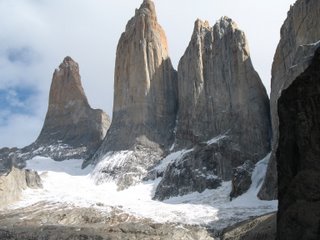

0 Comments:
Post a Comment
<< Home